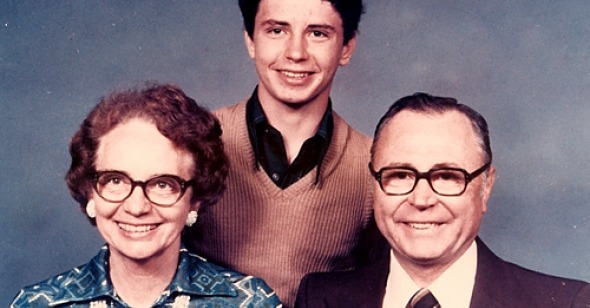Icon Games
By Danielle McCarthy
The Devil and Daniel Johnston
Dir. Jeff Feuerzeig, U.S., Sony Pictures Classics
For all you manic-depressive singer-songwriters, artists and, general cult icons, now is a very good time to be alive. A generation of hipsters are here to herald your every breath as you teeter on the brink of success or oblivion. Singer-songwriter, artist, cult icon, and most importantly, manic-depressive, Daniel Johnston is arguably the king of musical cult icons living today who truly remains a cult figure. I doubt Jeff Feuerzeig’s documentary, The Devil and Daniel Johnston, will catapult Johnston into the mainstream and that’s a good thing for fans and Johnston himself. With true fame come the sullying effects of business and money and the inevitable cries of sellout, although the title of cult figure is in and of itself a form of commodity that Johnston has surely reaped from in his modest career and perhaps controlled for the sake of his career.
Feuerzeig, who won Best Documentary Director at Sundance in 2005, had the good fortune to pick a subject with a deep interest in documenting every aspect of his life. There are numerous home movies, audio diaries, and photographs that detail Johnston’s upbringing in a Fundamentalist Christian household, the blossoming of his creative talents, and the time of his fracture with reality and descent into mental illness. It’s a rare and envious gift that pays off well in the telling of Johnston’s life and work. Feuerzeig, by gaining access to Johnston has unearthed never-before-seen or -heard home movies and audiotapes in which Johnston plays multiple roles with aplomb, tense audio recordings with Johnston’s bewildered mother, and possibly the moment Johnston fell in love with his life-long muse, Laurie—all captured on film or audiotape. Herein lies the power of Feurezeig’s film—so often the cult of an artist like Johnston is limited to word-of-mouth and what little information is available would often be contained within the insert of a cassette tape—especially in the case of a bootleg. In a pre-Internet era was the zine, an almost archaic art form whose spirit lingers today in the blog. Now, information on Daniel Johnston can yield thousands of websites on Google, but the real thrill of watching The Devil and Daniel Johnston is the remembrance of the youthful championing of artists that in turn builds communities and emotional ties that tend to linger long into adult nostalgia.
The first part of the film is hopeful, and Johnston’s talent is apparent in the artwork he created before he turned to music. Interestingly, it seems that the time when Johnston began writing music coincides with his mental unhinging. Laurie’s rejection of Johnston and his first time away from home at college became the fuel that led to his manic-depression and the refuge he found in music. Having rejected his family’s Fundamentalist Christianity throughout his teenage years, Johnston, unmoored from all that was familiar and crushed by Laurie’s rejection, began to truly believe in the devil and write music almost as a talisman against Satan’s power. With the Beatles as his guardian angels, he set forth on a completely unlikely musical career, recording his melodic folk songs on a boom box and giving out cassette tapes of his songs on the street. When Johnston landed in Austin, Texas, he weaseled his way onto the MTV show Cutting Edge and suddenly became a minor celebrity. That brush with fame seemed to further fuel Johnston’s delusions, and here Feuerzeig’s film kicks up the insanity several notches as a litany of Johnston’s wild behavior unspools at an alarming rate.
The last hour of the film focuses mainly on the multiple mental breakdowns Johnston suffered until his parents were able to finally wrest control over Johnston through proper and regulated medication. Feuerzeig, a slave to the myths himself, details a reckless trip to New York City, where members of Sonic Youth lost Johnston to the Bowery and were forced to drive around for days to find him. There’s also the time where Johnston (back from the very same New York trip) breaks into an elderly woman’s home and frightens her so badly with his talk of the devil that she jumped out of her second-story window, breaking both her ankles. Inevitably such antics led to Johnston being signed to major label Atlantic Records while confined to a mental institution. It seems the real tension in the film should derive from the question of whether or not Johnston is in control of this mythmaking behavior. Feuerzeig never probes that possibility, instead adhering wholeheartedly to the myth of the man while never coming in close enough to actually discuss his mental illness with him directly.
In the hopeful conclusion of the film, Johnston is once again playing music to his adoring fans with his watchful, elderly father at his side. As the credits roll Johnston is in his room surrounded by the clutter that seems to signify his manic-depression. Johnston mimics the gestures of his super-hero fantasies, and we are left to wonder is this all we’re going to get? In the end, The Devil and Daniel Johnston is everything a fan would want. There’s no true examination of the man behind the curtain—just the legend remains.
